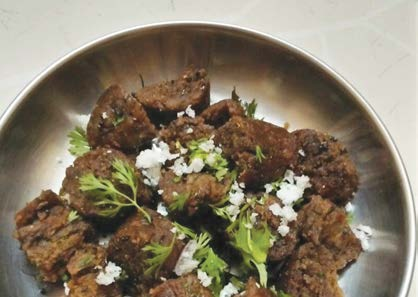Good Food Guide: Sugar Free Ragi Cookies

In a world facing climate change, sustainable food production presents a massive global challenge. Food systems will have to adapt to increasing global temperatures and water stress, and rise to the challenge of severe food insecurity, all while making high quality food available with minimal environmental impact. Agriculture, if predicated on the principles of diversity, integrated farming and sustainable practices can adapt to climate change and become more productive.
The average household can help ensure the future sustainability of our food system by altering its dietary preferences to include climate-friendly alternatives. Reducing how much meat and processed foods we eat, for instance, or avoiding out-of-season fruit or swapping water-intensive rice and wheat for millets a few times a week.
Millets are increasingly promoted as 'future foods' because:
- They are climate-resilient crops that withstand high temperatures and poor soils.
- They require little or no irrigation and do well in regions with low rainfall or drought-like conditions.
- They are powerhouse of multiple major and micro nutrients.
Also known as finger millet because of the characteristic structure of the earhead, ragi is a non-glutinous cereal and thus, a good carbohydrate source for people suffering from celiac disease. It is also one of nature's best sources of calcium and potassium.
While ragi is largely grown and eaten as a staple in the southern states of Karnataka and Andhra Pradesh, it features in traditional dishes all over the country, appearing as mandua rotis in Uttarakhand, mandiya pitha in Orissa, nachni thalipeeth in Maharashtra, marua ka halwa in Bihar and kodo ko jaanr or chhaang, in Sikkim and Darjeeling.
Ragi flour, however, is versatile and lends itself as easily to dosas and mudde as it does to baked goods, fried snacks and pasta.
Here's how to make ragi cookies.
What you'll need
- 50 grams ragi flour
- 50 grams whole wheat flour or atta
- 20 grams oats
- 60 grams jaggery powder
- 80 grams unsalted butter
- 1/2 teaspoon baking powder
- 2 tablespoons milk
Directions
Preheat your oven at 160 °C.
In a non-stick pan, dry roast the ragi flour on a low flame for about 10 minutes. This will help to remove the raw smell and taste of the flour. Transfer it into a bowl and let it cool. In another bowl, mix together well all the dry ingredients: wheat flour, oats, millet flour, jaggery powder, and baking powder. Add butter to the dry ingredients and, using your fingertips, start mixing butter with the dry ingredients until you get a texture like bread crumbs.
Now add 1 tablespoon of milk and bind the dough. If your dough is still dry, you may add more milk. I used 2 tablespoons for the recipe. Don’t over knead the dough like regular chapatti or bread dough. We don’t want gluten to form.
Cover the dough and refrigerate it for 30 minutes. This will help to set the dough and results in crisp cookies. After 30 minutes out the dough and divide the dough into 16 equal portions. Roll each portion of dough into a ball and slightly flatten it by pressing it in your palm. Place all the shaped cookies on a baking tray lined with parchment. Make sure to leave some space between them as the cookies will expand while baking.
Bake the cookies in a preheated oven for about 15 to 18 minutes. Once done, take the tray out from the oven and, using a flat spatula, transfer all the ragi cookies to a wire rack to cool. These cookies store well for up to one month in an air tight container.
Images © Sonia Gupta.
A version of this recipe originally appeared here.
Sonia is an entrepreneur and home baker. Her blog, Sonlicious, is proof that 'healthy treats' is not an oxymoron.








